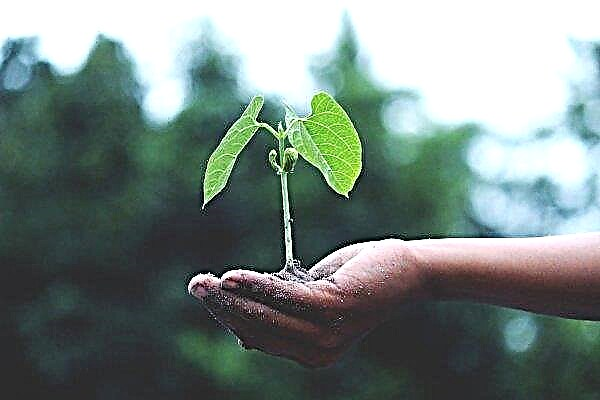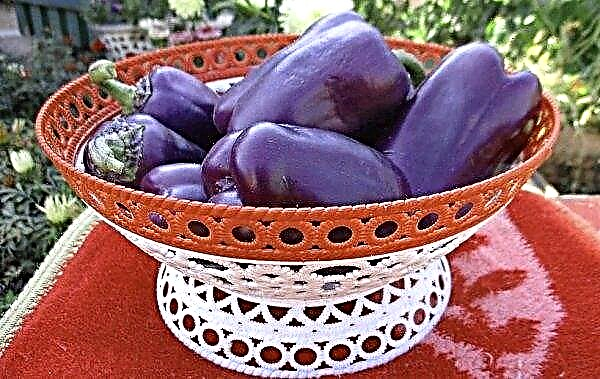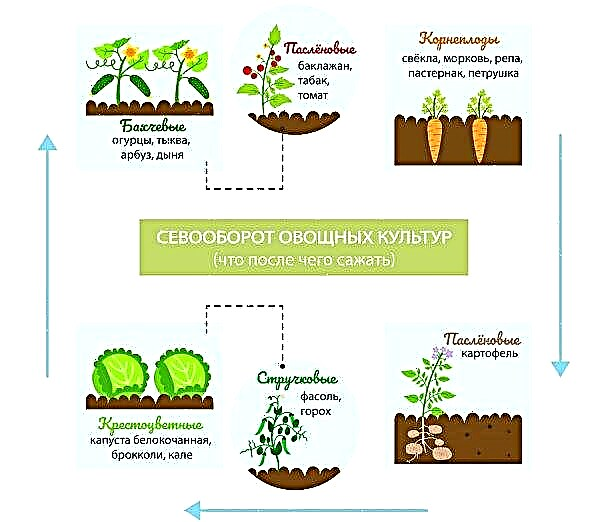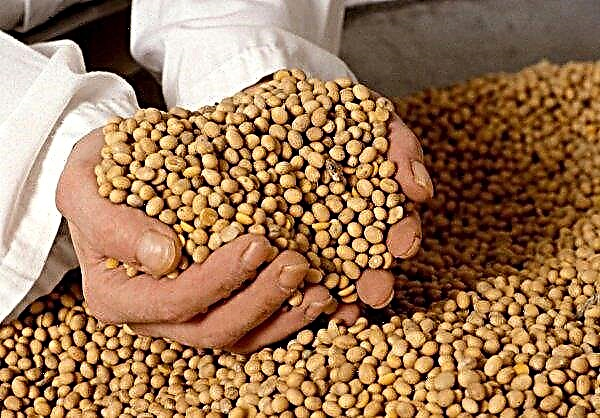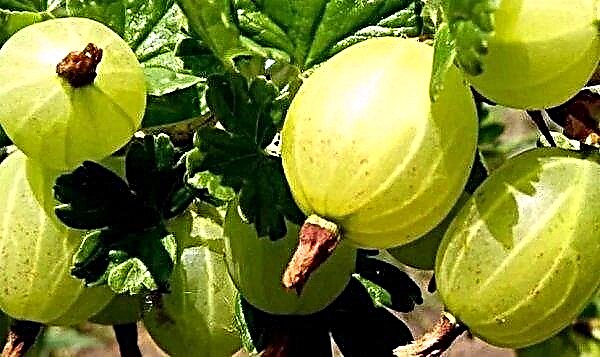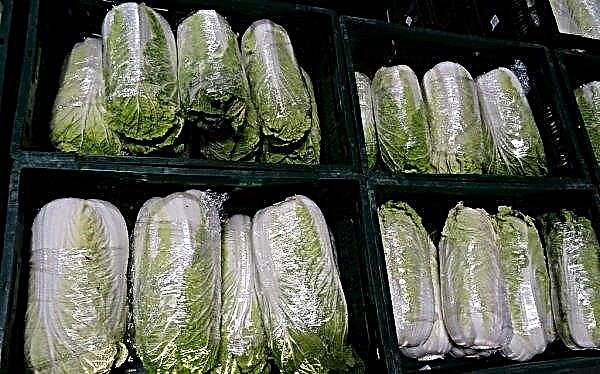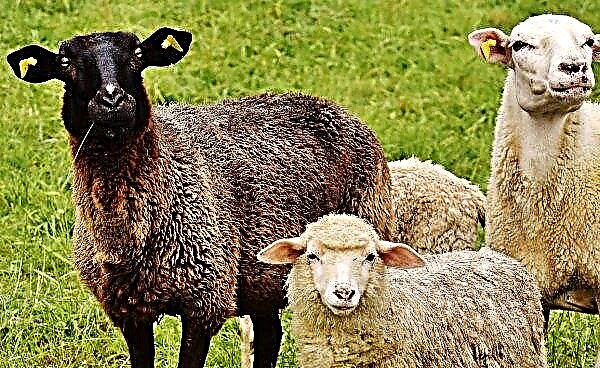Bulgarian breeders brought forth bright tomatoes, similar to eggs painted for Easter. So they were called - Easter eggs. If you plan to grow this unusual variety on your site, be sure to read the rules of its cultivation.
History of Variety Breeding
Easter eggs are a rare variety that is not sold in every store. Most often, seeds are distributed by collectors and professional vegetable growers. According to them, the variety was bred from Bulgaria.
Characterization and description of the variety
Tomatoes Easter eggs are cocktail varieties with small fruits. The bushes are indeterminate, grow up to 170 cm. The fruits are formed in the brushes, each up to 6 tomatoes. In the southern regions, bushes well perceive open ground. In a temperate climate, vegetable growers plant a plant in greenhouses.
Did you know? Tomatoes are a dietary product. Calories 100 g of product — only 19 kcal.
Productivity
Tomato Easter egg has a medium early maturity. Fruits ripen in 100-110 days. Gardeners remove 6-7 kg from one bush. Harvest ripens gradually.
Description of the fetus
The shape of the fruit is egg-shaped. The weight of the tomato is in the range of 50–120 g. The first fruits are larger in size than the late ones. The skin is thick but soft. The taste is saturated, sweet and sour. At the last stages of ripening, the fruits are the sweetest. Bicolor tomatoes - red with yellow streaks.
Advantages and disadvantages of the variety
- Grade advantages:
- high productivity;
- fruit quality;
- unpretentiousness;
- keeping quality;
- disease resistance;
- universal application.
- The disadvantages are:
- the need for herding;
- the need for tying bushes.
Optimal timing for growing
Sowing is carried out on March 1-10. With such terms, seedlings can be moved to a permanent place in early May. The calculation is based on the time of growth of seedlings - they are usually ready for transplant at the age of 55-60 days.
Growing Features
A variety of Easter eggs are grown in seedlings. Before transplanting to a permanent place, the vegetable grower sows seeds, grows seedlings and conducts preparatory work in a greenhouse or garden.
Did you know? Botanists call tomatoes berries. However, in the 19th century, the U.S. Chief Justice issued a verdict: despite the botanical description, tomatoes are vegetables because they are served with main courses.
Growing seedlings
Seedlings are grown for 2 months.
The process consists of several stages:
- Tank preparation. For sowing, it is necessary to prepare a large box where all seedlings will grow. For a dive, you will need separate pots or glasses.
- Seed preparation. To test for suitability, the seeds are soaked in plain water. Floated grains are unsuitable for planting. To protect against infection, seeds are also treated with 1% potassium permanganate solution.
- Soil preparation. The easiest way is to buy a finished substrate. However, the soil can be prepared independently of five components: earth, peat, sand, humus and ash. Before planting, the soil must be neutralized. Usually gardeners steamed it, calcined in the oven or disinfected with boiling water.
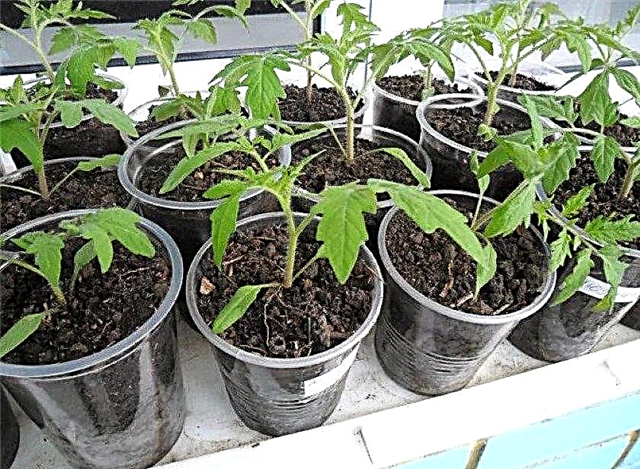
- Sowing seeds. Fill the drawer with the substrate and sow the seeds. Sprinkle them with a layer of earth up to 1 cm. Spray the soil with warm water from the spray gun. Cover the container with foil and place in a place protected from light and cold. The optimum temperature is + 25 ° C. Watch out for seedlings: when dry, moisten, when wet, ventilate.
- Film removal. Sprouts will appear within 1-2 weeks. At this point, the film must be removed. Now the box is rearranged to the source of diffused bright light. The temperature regime is the same. Watering seedlings should be as the soil dries. 2-3 weeks after the appearance of the sprouts, begin to fertilize the seedlings. Both organic and mineral products are suitable. The frequency of fertilizing - 1 time per week.
- Pick. When the seedlings will be 2-3 leaves, transplant them into larger containers. Continue your previous tomato care.
- Hardening. A week before planting on a permanent place seedlings need to start hardening. To do this, take them to fresh air. On the first day, staying on the street is limited to 1 hour. Gradually increase the period by 1 hour.
Preparation of land for planting seedlings
Seedlings take root more quickly on prepared soil.
Preparation consists of the following procedures:
- soil loosening;
- disinfection with a solution of potassium permanganate;
- the introduction of organic or mineral-organic complex fertilizers.

Seedling Planting Technology
To plant seedlings in open ground or in a greenhouse, follow the designated technology.
- Moisten the ground in containers with seedlings.
- Dig holes. The distance between the bushes should be 50 cm.
- Remove the seedlings from the boxes and transfer to the wells.
- Fill the pits with soil.
- Water the seedlings.
Important! When planting, proceed carefully so as not to damage the roots of the plant. The rooting of the bush depends on the state of the root system.
Basic crop care rules
The growth and yield of a tomato bush largely depends on care after planting. Tomato Easter egg is no exception.
Watering
When watering, follow these rules:
- water is not colder + 21 ° С;
- 5 liters under one bush;
- watering as the soil dries up, every 3 days;
- you need to irrigate the soil from a watering can, without affecting the tops;
- watering time - preferably in the morning before the start of solar activity, but it is possible in the evening.
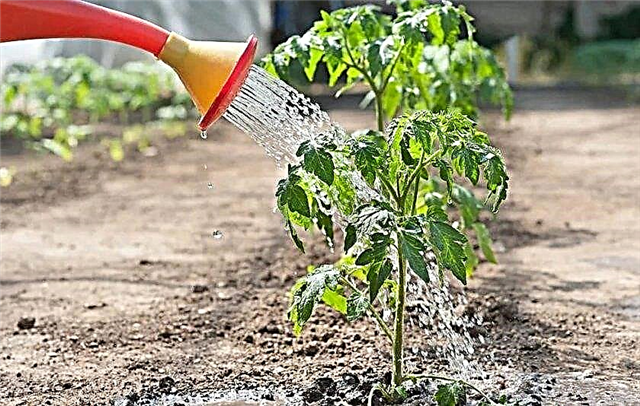
Top dressing
Tomato Easter eggs for the normal development of the bushes need nutrition. They are applied in two ways: by foliar spraying and introduction into the soil.
There are different feeding schemes. Gardeners usually fertilize tomatoes based on an acceptable schedule. The minimum number of fertilizers during the growing season is three. Schemes for 4 top dressing are also offered. However, the bushes are best at fertilizing every 2 weeks.
Mineral top dressing and organics are suitable for tomatoes. Many farmers choose the ideal mineral-mineral preparation. It consists of four components: humic substances, nitrogen, phosphorus and potassium. Organic substances such as bird droppings are also popular.Pasynkovka and formation of a bush
Tomatoes Easter eggs need to be planted. Stepsons must be carefully broken down, not pulled out. Their removal has a beneficial effect on the crop. Also, for the development of fruits, the bush should be formed. In this case, it is better to leave 2 main trunks. So that the shoots do not bend under the weight of the fruits, they need to be tied. You can use a trellis or a stick 2 meters high. As they grow, the branches are tied with strips of fabric.

Soil weeding
Weeds should be removed as they appear. Conveniently weed beds when loosening. Loosening the soil is best at the same time as watering.
Important! To avoid decay, use synthetic materials for tying.
Diseases and pests of the variety
The Easter Eggs variety is resistant to diseases and pests. If fungal diseases, plaque, rot have been noticed, use fungicides, for example, Topaz. Use insecticides such as Actellic to control insects.
To prevent disease, vegetable growers often spray bushes with Bordeaux fluid. Of natural preparations, an ash infusion is offered. For this, 2 tbsp. l chopped charcoal pour 2 liters of water. After 2 days, the solution can be sprayed with plants.

Harvesting and storage rules
The fruits ripen not at the same time, but over a long period. Gather tomatoes as they ripen. Harvest during storage does not crack. Also, tomatoes perfectly tolerate transportation.
Vegetable growers leave positive feedback about the variety on forums and sites. A variety of Easter eggs is quite unpretentious and has positive characteristics. Follow all the rules of planting and caring for the bush - and then the tasty and healthy fruits will ripen on time.




